Art World
War-Time Exploding-Chocolate-Bar Scheme Revealed in Drawings
Germany plotted Winston Churchill's assassination with candy.
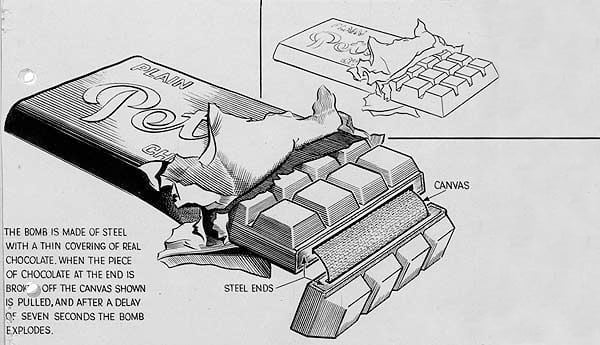
Germany plotted Winston Churchill's assassination with candy.

Sarah Cascone

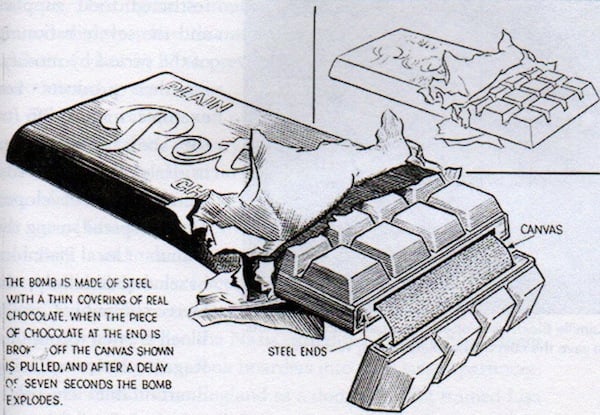
One of Lawrence Fish’s technical drawings of a German sabotage device.
Photo: Lawrence Fish.
Long-lost drawings from World War II show some of Germany’s crafty plans to defeat the Allied Forces, including an exploding chocolate bar, a bomb buried in an army mess tin beneath the classic British dish of bangers and mash, and an incendiary motor oil can.
Drawn by self-taught British draftsman Laurence Fish, the technical schematics were based on intelligence obtained by the UK’s M15 counter sabotage unit.
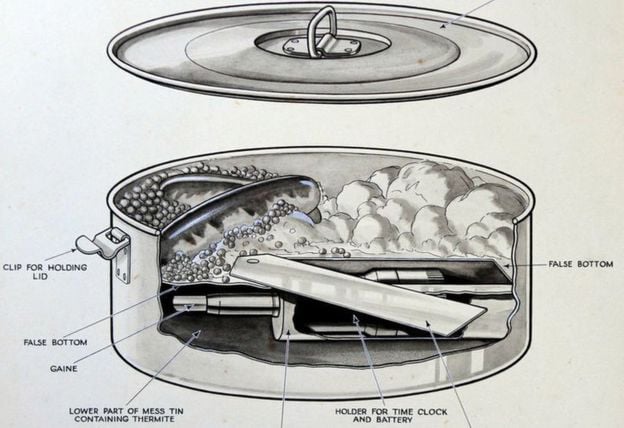
One of Lawrence Fish’s technical drawings of a German sabotage device.
Photo: Lawrence Fish.
Germany is said to have plotted to assassinate Winston Churchill using the chocolate bar. Other imaginative Nazi weapons diagrammed by Fish include a bomb designed to look like a Thermos, a magnetic mine that could destroy British supply ships, and a timing device activated by exposing dried peas to water, all drawn by hand with remarkable, machine-like precision.
Fish was recruited for the assignment by his father, Donald, one of just two members of the small team who served under lieutenant colonel Victor Rothschild (the other being Rothschild’s secretary and future wife). After dismantling the unsuccessful German booby traps, Rothschild turned to the younger Fish to document the ingenious devices.
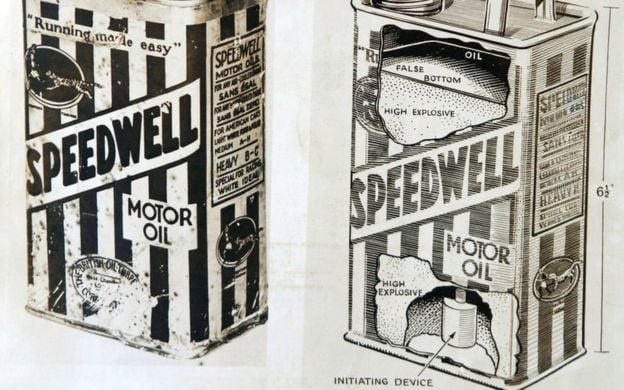
One of Lawrence Fish’s technical drawings of a German sabotage device.
Photo: Lawrence Fish.
“He didn’t draw a salary; he almost certainly paid Fish for the illustrations himself,” historian Nigel West told the BBC of the third baron Baron Rothschild, calling him “immensely generous with his family’s money.”
The drawings lay forgotten for 70 years, until Rothschild’s daughter uncovered them in a chest of draws while cleaning out her family home just a few weeks ago.
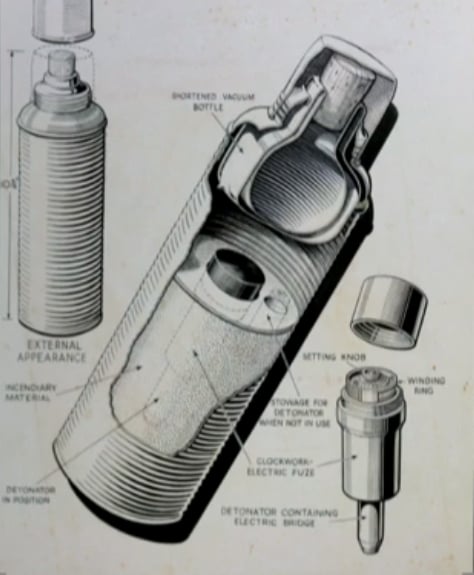
One of Lawrence Fish’s technical drawings of a German sabotage device.
Photo: Lawrence Fish.
“It was so exciting,” Jean Bray, Fish’s widow (he died in 2009), told the Gloucestershire Echo of the unexpected discovery. Bray had Rothschild’s letters commissioning her husband’s work, stamped “secret,” “but nobody knew what had happened to the drawings. We presumed that they had been destroyed or lost.”
Bray now hopes to find a museum that would be interested in her husband’s wartime work.
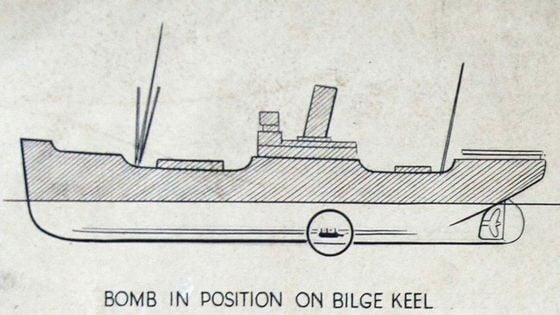
One of Lawrence Fish’s technical drawings of a German sabotage device.
Photo: Lawrence Fish.
“Nowadays people would say these drawings are nothing and you could do it with a computer in seconds,” Bray added. “But there was no machinery or anything like that at the time. They are all hand drawn.”
Following the war, Fish went on to a successful career as a graphic designer and landscape painter. According to the artnet Price Database, two of Fish’s later commercial works, vintage travel lithograph posters, sold at auction in 2009 for $1,239 and $1,858, respectively.